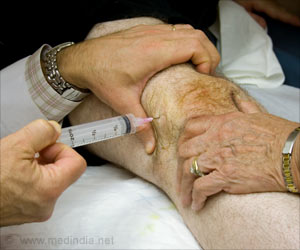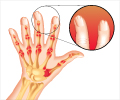Most people with knee osteoarthritis actually already have the physical function necessary to walk at least 6,000 steps a day, suggested a new study.

‘Most people with knee osteoarthritis already have the physical function necessary to walk at least 6,000 steps a day, the minimum amount needed to improve their arthritis and prevent disability.’





According to new research findings
presented this week at the 2016 ACR/ARHP Annual Meeting in Washington,
most people with knee OA actually already have the physical function
necessary to walk at least 6,000 steps a day, the minimum amount needed
to improve their arthritis and prevent disability.Researchers at the University of Delaware’s Department of Physical Therapy analyzed publicly available data from the Osteoarthritis Initiative to measure physical activity and physical function among OA patients.
“We were interested in understanding what minimal level of functional ability was necessary to be physically active,” said Daniel K. White, Assistant Professor and the study’s lead author. “For instance, how far does one need to be able to walk in order to be active in the community?”
Establishing minimum physical function thresholds a day helps clinicians prioritize when to prescribe interventions like physical therapy. Physical function was measured according to timed, five-repetition sit-to-stand (STS) tests, timed 400-meter walks, and walking speed on a 20-meter walk. To establish a minimum threshold for both physical function and activity, they calculated cut points at 80% and 95% specificity for walking 6,000 steps per day.
There were 1,790 participants who wore their monitors for three or more days and moved 6,319 ± 2,920 steps a day, with 47% walking more than 6,000 steps a day. The mean STS test results for these participants was 10.2 ± 3.2 seconds, and their 400-meter walk speed was 305.3 ± 51.4 seconds. Their walking speed was 1.3 ± 0.2 meters per second. Physical function at or below these thresholds may be a barrier to people with OA getting the minimum level of physical activity they need, said White.
Advertisement
“Our findings are important to both patients and providers. They are important to patients to realize that most people with knee OA are able to live a physically active lifestyle. They are important to providers to understand when someone may need help with their functional ability to become physically active, such as receiving a referral for physical therapy,” he said.
Advertisement
“Now that we have an idea of how much ability is necessary to be active, we can better develop intervention strategies that are personalized to patients’ individualized needs so we can get them to be more active,” he said.
Source-Newswise















